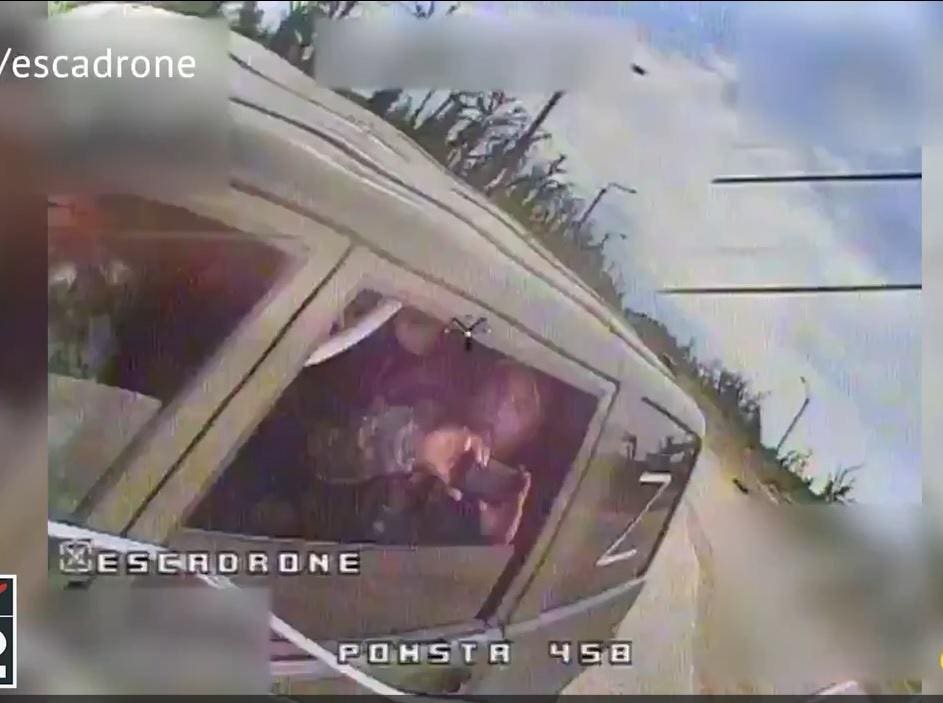Ukraine’s small drones are taking a toll of Russian trucks supplying frontline units. The long reach of airpower has always made it a useful means of attacking enemy supply lines, but in this case it is not a matter of range, but precision guidance and the need for speed.
Russian front lines are within range of Ukrainian artillery and other weapons and convoys of trucks make obvious targets. Supplies of food, ammunition and fuel can be loaded on to vans and pickup trucks for the last few miles to make high-speed runs through the danger zone.
Small, fast-moving targets are challenging. Guided weapons like anti-tank missiles need clear view for the entire during of the missile flight, which is likely to be ten seconds or more. Such missiles are also too scarce and expensive to be wasted on low-value targets like pickup trucks. Small transports are also a challenge for artillery. Even if it was just the matter of the flight time of the shell, a vehicle moving at 40 mph will have moved several hundred feet by the time a round arrives. In practice it takes a minute or more to relay target details and co-ordinates to the gun crew, so a hit will be a matter of guesswork. Again, commanders may prefer to conserve scarce ammunition.
Small FPV kamikazes, adapted from racing drones, offer new possibilities. For one thing they are cheap and reasonably plentiful – non-profit group Escadrone alone is now making 1,500 a month, at a cost of just $462 each. The operator can seek out and pursue targets from beyond line of sight, so dipping behind trees or buildings, or making sharp turns, will not save them. Top speeds of 60 mph or more mean FPVs can reach an area rapidly and intercept, or, if necessary chase a target down. The FPVs maximum range of around eight miles is less than artillery, but enough to get across Russian lines and hit supplies coming in.
FPVs are mainly used for tougher targets, taking out Russian personnel carriers, artillery and even tanks. But an interesting subset of the combat videos coming out of Ukraine and shared with Escadrone’s Telegram page show how effective they are at interdicting supply chains by taking out last-mile transport.
These videos show three specific tactics adopted by FPV operators to hit fast vehicles.
One is to go for the head-on strike. A number of engagements show FPV drones travelling at high speed and low altitude down straight stretches of road, and aiming to collide with vehicles coming the other way. In these engagements the drone operator usually aims for the windshield to target the driver.
A second type of attack involves falling in behind the vehicle and gradually overhauling it. In some of these engagements the vehicle seems to be trying to outrun the drone. In some they may even succeed – it is not clear whether a heavily-laden drone will always beat a light vehicle – but we do not see these videos. In these cases the drone operator seems to aim to come in from the side.
The third type of engagement, which requires greater skill, is a combination of these: overtake the vehicle from behind, make a U-turn and then aim straight for it, again targeting the drive for the maximum chance of a kill.
There is a compilation of more engagements here. Sometimes the target vehicles make sharp maneuvers; in one video, a passenger can be seen apparently filming on his phone a fraction of a second before the drone hits.
FPV kamikazes have only existed for a year, with the first video appearing in July 2022. Now they have become ubiquitous in Ukraine and are deployed by the thousand by both sides. While previously there were similar, military-grade weapons like the SwitchBlade 300, these are scarce and expensive, and carry a much smaller warhead.
We are seeing the employment of FPVs evolving practically in real time. Initially they looked like a good way of delivering an anti-tank grenade against an armored vehicle or explosives into a building and they certainly seem to be effective. But, as the videos above show, their greatest value may lie in cutting enemy supply lines. Or possibly in attacking troops dug into trenches, or in tackling minefields, or in some other application still being developed.
Military acquisition usually moves in cycles taking several years. This war is seeing technology evolve day by day. By the time it is over, the rest of the world may have a lot of catching up to do.
Read the full article here





